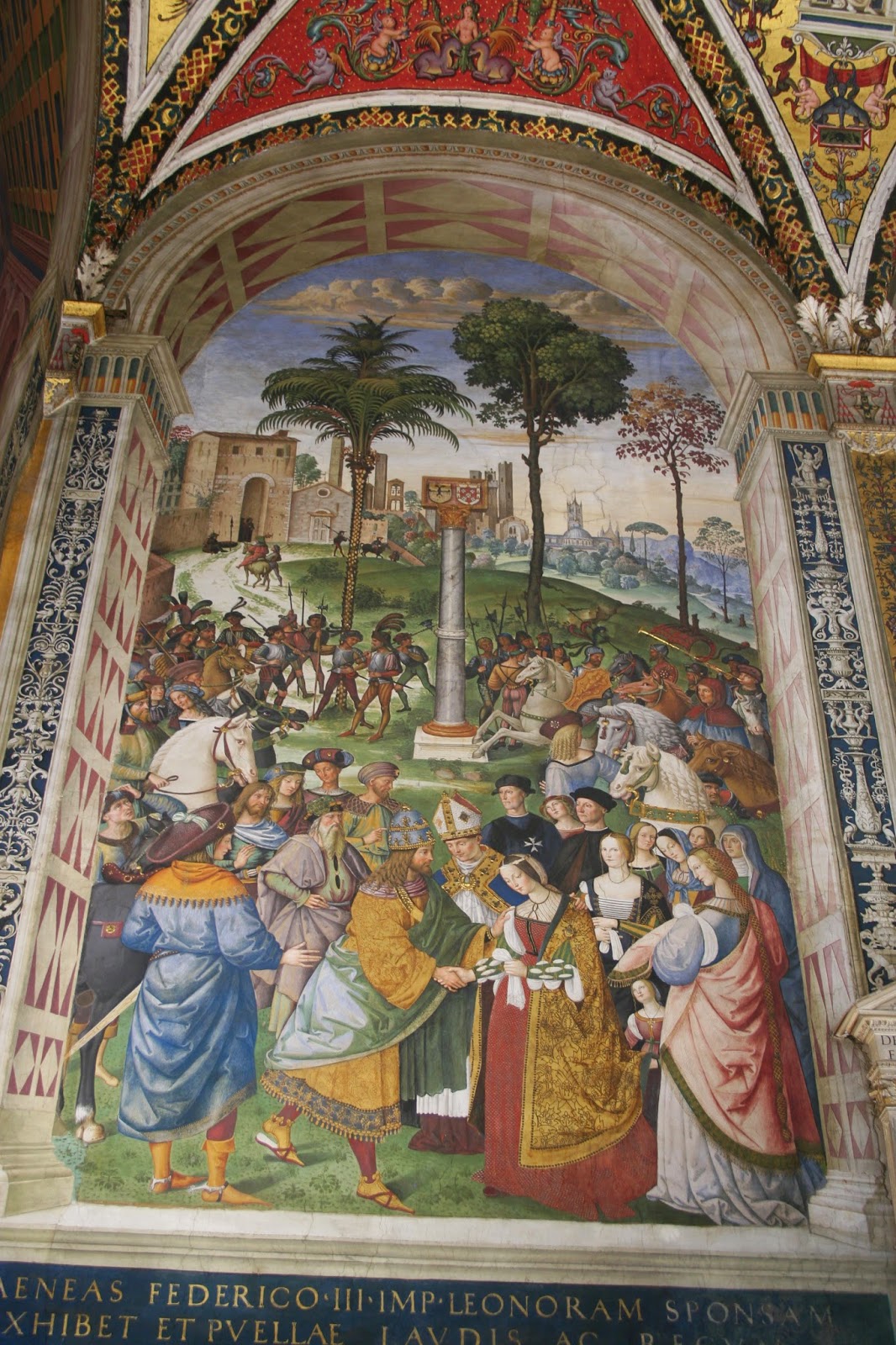The library is a jewel in the Cathedral of Siena, built in the sixteenth century to preserve the wealth of books of the pope.
At the entrance into this small room the visitor is enchanted by the essence of Renaissance culture: manuscripts on the bulletin boards, flooring cobalt and frescoes by Pinturicchio. They are the life of Pope Piccolomini, Pope Pius II, and after the restoration they have again bought bright colors, making it more alive the characters depicted. Among the most famous scenes stand out the meeting between Frederick III and Eleanor of Aragon, and the canonization of St. Catherine. In this fresco scholars recognize the depiction of Raphael as a young man: he is the young man at the bottom left, with red stockings. All the characters of the frescoes are decorated in great detail and the painter has taken care of these details, such as the soft folds of the garments, jewelery and ornaments of the characters.


La libreria è un gioiello incastonato all'interno del Duomo di Siena, fatta costruire nel Cinquecento per conservare il patrimonio librario del pontefice.
Già dall'ingresso in questo piccolo locale il visitatore rimane incantato dall'essenza della cultura rinascimentale: manoscritti esposti nelle bacheche, pavimentazione color cobalto ed affreschi del Pinturicchio. Questi rappresentano la vita di Papa Piccolomini, Pio II, e dopo il restauro hanno di nuovo acquistato colori brillanti, accesi, che rendono maggiormente vivi i personaggi raffigurati. Tra le scene più celebri risaltano l'incontro tra Federico III ed Eleonora D'Aragona e la canonizzazione di Santa Caterina. In quest'ultimo affresco gli studiosi riconoscono la raffigurazione di Raffaello da giovane: è il giovane in basso a sinistra, con le calze rosse. Tutti i personaggi degli affreschi sono decorati nei minimi particolari ed il pittore ha curato proprio questi particolari, come le soffici pieghe delle vesti, i gioielli dei personaggi e gli ornamenti.






